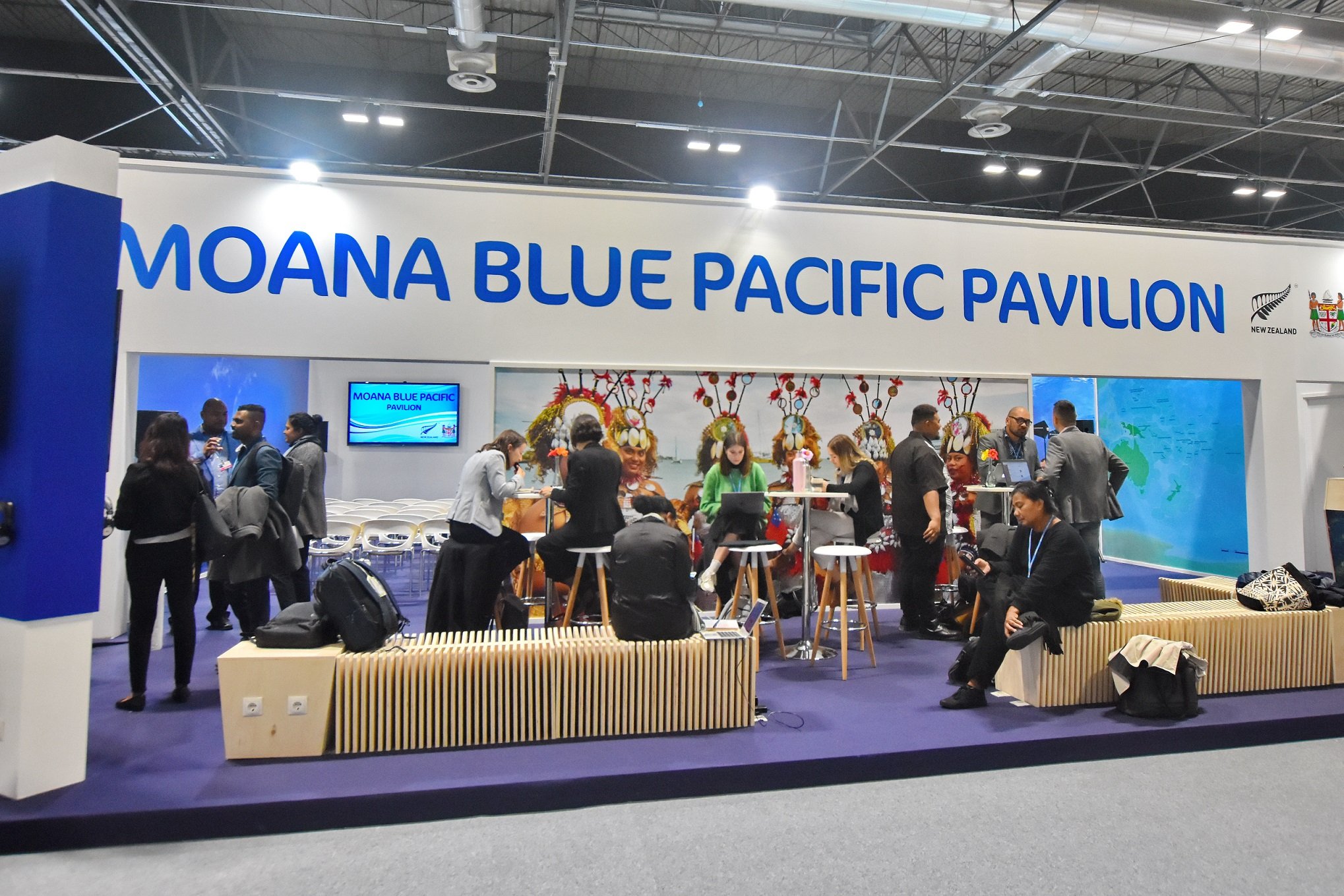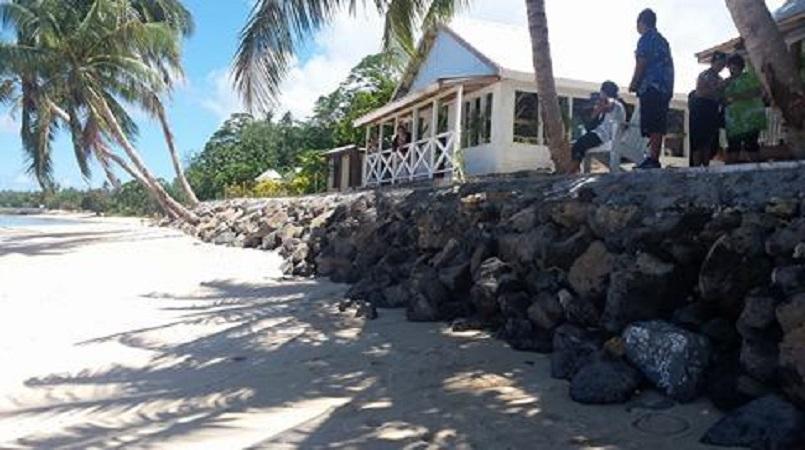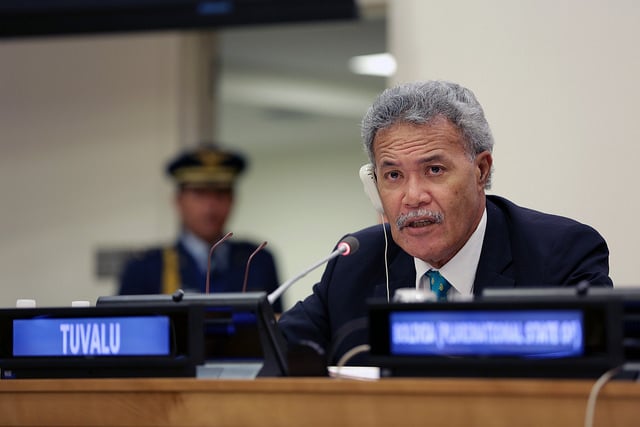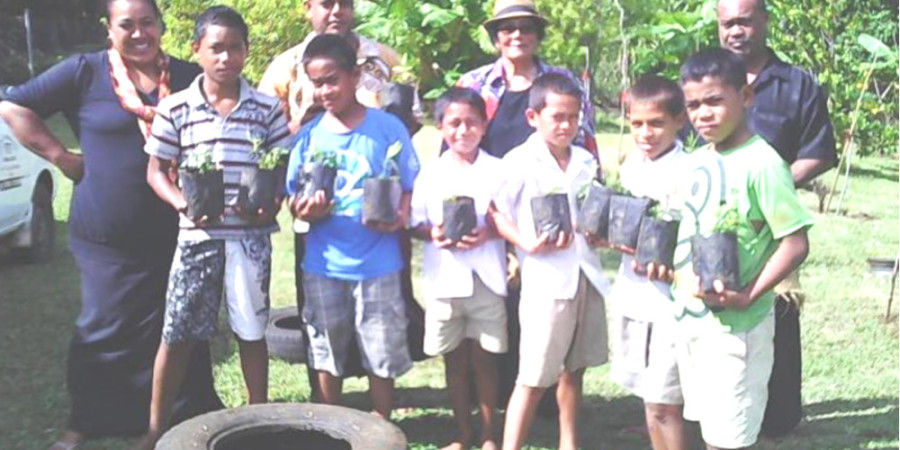
Climate Change has brought to our islands in the Pacific new challenges.
Some of our islands have lost their waterfronts – the beaches have extended far inland, with mangroves and plants that once marked the water-marks now a part of history.
Others in our Pacific are experiencing the continuing levels of sea rise – some islands now slowly sinking as a result.
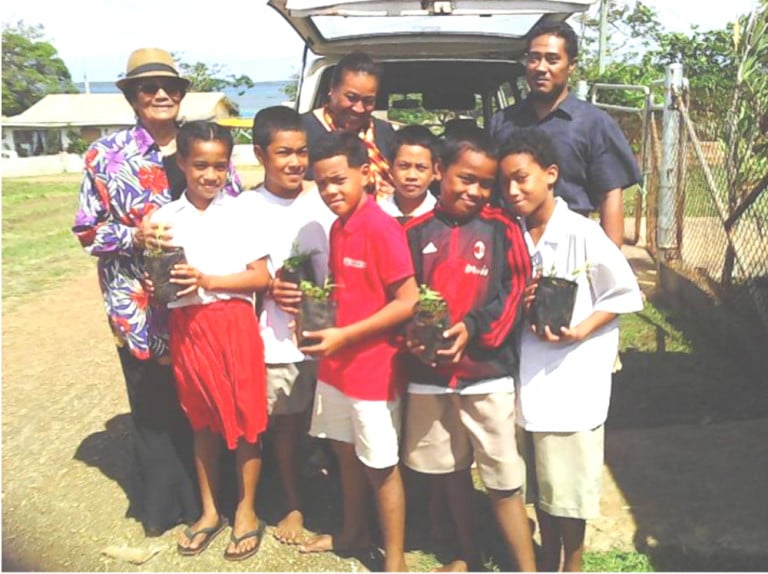
Still others have continued to see the slow erosion of vegetation near the rivers or sea, as nature continues to struggle with pollution and carbon emission.
Here in our small Island Kingdom of Tonga the story are pretty much the same.
On the main island of Tongatapu the effects of climate change continues to be played out every day for everyone to see.
And the story remains pretty much the same also for the outer islands of ‘Eua, Ha’apai and Vava’u.
With the Green Climate Fund now offering millions for island nations like ours to try and use on projects that would help our communities who face the risks try to win back some of the things they might have lost, many feel that we might have some solutions on our hands.
Yet, the fight to try and save what we have and replace those that we might have lost has been ongoing for years past.
Civil societies have partnered with donor agencies and governments in taking projects to the communities, aimed at sustaining livelihood and nature.
One such group is the Tonga Community Development Trust, who is in partnership with the Ministry of Education, the National Emergency Management Office and Ministry of Environment and Climate Change (MEIDECC), the Civil Society Forum Tonga and the Ministry of Agriculture in implanting the ‘Child-Centred Climate Change Adaptation (4CA) program around the Kingdom.
The project is funded by the Australian Government through the Australian National Office (PA-ANO) in Canberra in partnership with the Foundation for the People of the South Pacific International (FSPI) in Suva, Fiji.
The goal of the 4C project is to have safe and resilient communities in which children and young people contribute to managing and reducing the risks associated with changes in climate and natural disaster.
The project’s key objectives include increasing the awareness and capacity of children, youth and communities of climate change and related disasters, so that they can facilitate child-centred climate change adaptation (4CA processes), help develop and implement locally appropriate climate smart solutions that incorporate and demonstrate the 4CA model and to advocate for the inclusion of good practices and good learning from the 4CA program approach in local, district and/or national government processes.
The 4CA project
Program Manager Naaluse Taiala said the project is being piloted on the island of Vava’u.
Vava’u Island is one of Tonga’s largest archipelagos and is home to over 30,000 people of the Kingdom’s over 110, 000 population.
Vava’u is also known for its scenic view, sandy beaches and pro-tourist outlook.
Ecotourism is also thriving in Vava’u, hence the decision to introduce the idea of “Carbon Sink with a Blink” as the theme for 4CA Seed Grant for 2015.
Ms Naaluse said the idea of the ‘Carbon Sink with a Blink” was borne out of the need to step up the growth of green environment for the students in the schools.
The 10 primary schools selected have a total roll of around 200 students.

The schools are GPS Koloa, GPS Toula, GPS Fangatongo, GPS Taoa, GPS ‘Utungake, GPS Tu’anuku, GPS Talihau, GPS Liviela, GPS ‘Olo’ua and GPS Ofu.
The different villages included were Koloa, Toula, Neiafu, Utungake, Talihau, Tuanuku, ‘Olo’ua and Ofu.
That would mean around 15,000 people involved.
“They were each given roughly 100 trees, for each school,” Ms Naaluse explained.
“The seedlings provided were Sandalwood seedlings. The costs to procuring one single seedling of Sandalwood ranged between TOP$20 TO TOP$ 30.”
The idea was to get the students to plant sandalwood to replace trees and plants that would have been destroyed in soil erosions, washed away from near the river banks or the waterfront.
Sandalwood planting became the instant idea – with the program believing that the end result would also rake in funds that would help the communities later on.
Ms Naaluse said the investment projection for keeping a Sandalwood tree for eight (8) years is roughly TOP$1,000.
The Principal of Taoa Primary School, Mr Atamani Asikia said their eight-year old Sandalwood tree, had actually fetched over TOP$10,000 when it was cut down.
That fund has helped build a house for the school’s Peace Corp volunteers.
“That was a big thing for us and having the project will help us get back some of the vegetation we once had, while at the same time also ensuring that we get some monetary benefit in the end,” Mr Atamani said.
“Since the sandalwood tress need other trees and plants to grow with that will also see us planting some other plants that would also help in maintaining the green environment we need,” he added.
Ms Naaluse said that with the 100 trees that were allocated for school, each child takes three trees home.
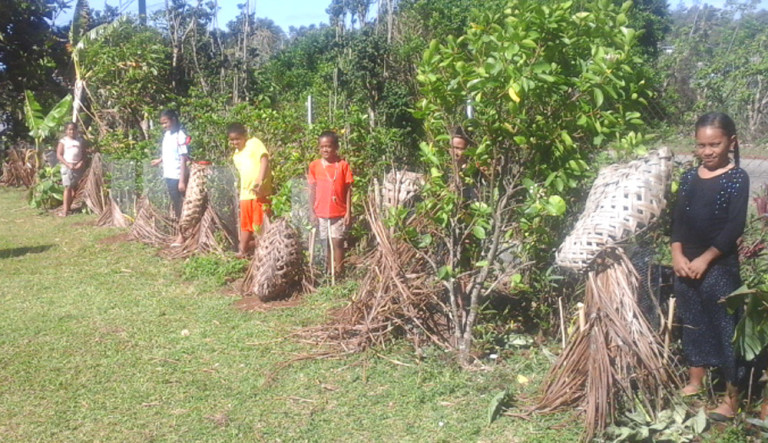
“The idea that the remaining 10 sandalwood in the school will be populated with the complimentary trees that will help the sandalwood grow organically,” she said.
“The beauty of this project is the multi-tiers of complementary trees that will accompany each sandalwood plant. It was found that during propagation stage, legume plants must be planted around the sandalwood seedlings.
“These legume plants and the sandalwood will have a biotic relationship thus organically supporting each other’s livelihood. A sandalwood plant standing alone will not survive long and would not yield the size and texture that will fetch big money.
“When the propagated seedling is transferred to the ground, they are planted in a systematic way to ensure best access to all nutrients necessary for its maximum growth.
“Spacing will be a meter each between each sandalwood tree whilst another row of supplementary plant will be planted, one meter, between each row of sandalwood.
“So far, we have found that Cardinia, lemon trees, pawpaw, marigold, and a lot of fruits and flowering plants can grow well along the sandalwood trees.
“The idea is that Sandalwood plants will benefit from the shade, moisture, organic composting of leaves and debris that will be generated by the other tress, thus ensuring a continuous supply of nutrients for the sandalwood plants.”
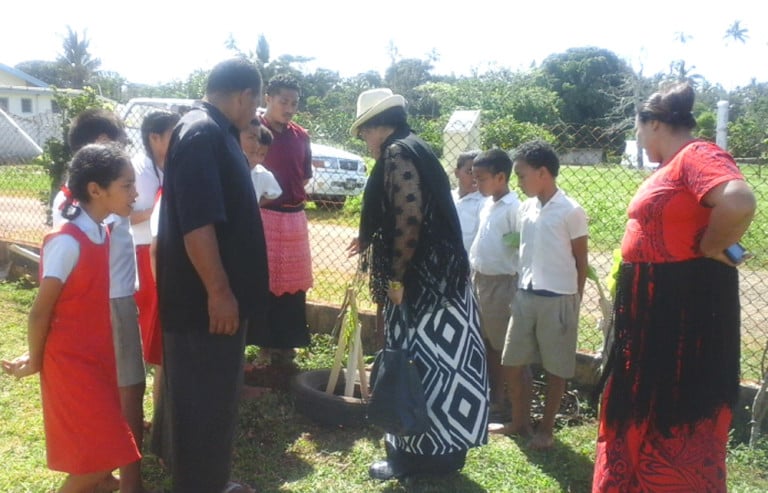
Ms Naaluse said the strategy of involving the kids at school has stimulated a lot of interest from their parents and guardians.
The Governor of Vava’u, Lord Fulivai also spoke out publicly in support of the project and has involved the Village Officers and Town Officers on the island in supporting the project.
“We believe that the project will be beneficial for Vava’u in more ways than one,” Lord Fulivai said.
“While we will be able to retain some of our green environment and replace those that we have lost, we will also have monetary rewards at the end.
“And off course our people will learn to be responsible and replant to replace trees that might have been lost.”
‘Carbon sink with a blink’
Ms Naaluse said the project will generate a boost for the local economy in Vava’u.
“Therefore, in the midst of the public support to ensure this project is successful, each parent of the 20 students, each schools that were selected have to ensure that all the other accompanying trees are planted properly and faithfully in order to ensure the sandalwood trees reaches its maximum economic potential,” she said.
“Therefore in the blink of the economic potential, the green environment will be generated thus creating a carbon sink in each of the 200 houses and each of the 10 schools.
“We have the network in place, between the political will from the Governor’s office and the local governments, District Officers and Village Officers, the educational systems of the school and connection, the parents association and the children themselves. They are all in support of the project, thus guaranteeing that contribution to building more ‘sinks’ for the carbon dioxide as well as ensuring a good investment for the future generation of Vava’u.”
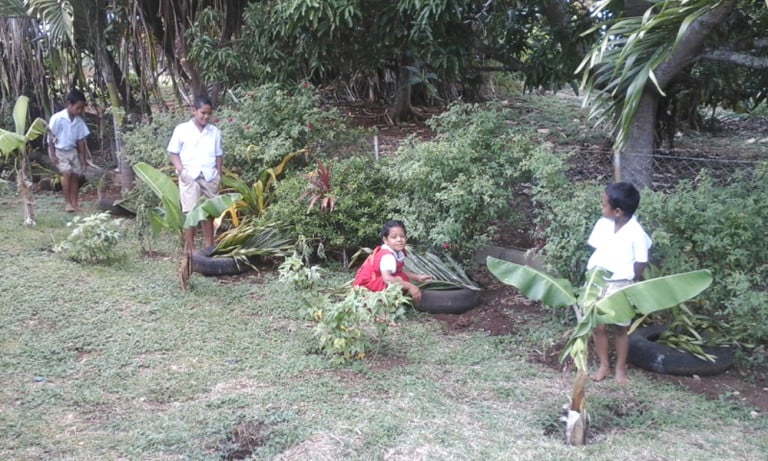
The children have labeled each sandalwood plant they had planted.
They are tasked with looking after the plants and there is already discussions that 10% royalty will be paid to the children in the next 10 years when the sandalwood would eventually be harvested.
Ms Naaluse said “the blink of money is the catalyst for the people’s commitment and thus distracting them from the real strategy of helping our environment”.
The analogy is that the momentarily flash from the blink of the ‘coins’, they will in turn plant more trees, fruits and flower to decorate the island, provide food security and build the sink for carbon.
“We have learned that in a developing country, we must create an attractive environment to get everyone involved,” she said.
“Our children are often the gateway to parent’s heart. Getting them involved does not take much, as a plea from a child and the parents will rush to help.
“We must also help people to feel there is a higher purpose thann just planting a tree. The economic potential of sandalwood tree was a sure sale as Tonga just recently experienced the financial boom of the sandalwood market.
“We are hoping that this will be a flagship project where we can use these ‘climate champions’ to convince the nation on how important our environment is and how planting a tree could heal the environment and boost the economy at the same time.
“It is a win-win situation not only from the bling of a dollar sign but from the brightness of a child’s smile.”
Tonga Trust director Mrs Papiloa Bloomfield Foliaki said the project is something they believe is the best way to get their message to the people and involve the community.
“The 4CA project bring everyone together to think on the same page as they all work together to achieve the ultimate aim – getting the green back into the environment, cutting carbon emission and getting money at the end to help the communities,” she added.
Mr. Soane Lavakei’aho, the 4CA teacher in Toula, added that the project has generated a lot of interest in the school and the community.
“The students involvement meant that their parents and families are also involved and the fact that everyone understands the monetary gains from selling sandalwood meant that there is so much interest in the project,” Mr Soane said.
“It is a win-win situation for all of us and we are thankful for the insight and the wisdom in including the project for Vava’u as this will definitely be a big boost for each of the schools and communities involved.”
The wait is now on to see how best the sandalwood trees and their supporting environments grow together to ensure that the green of Vava’u is returned!


